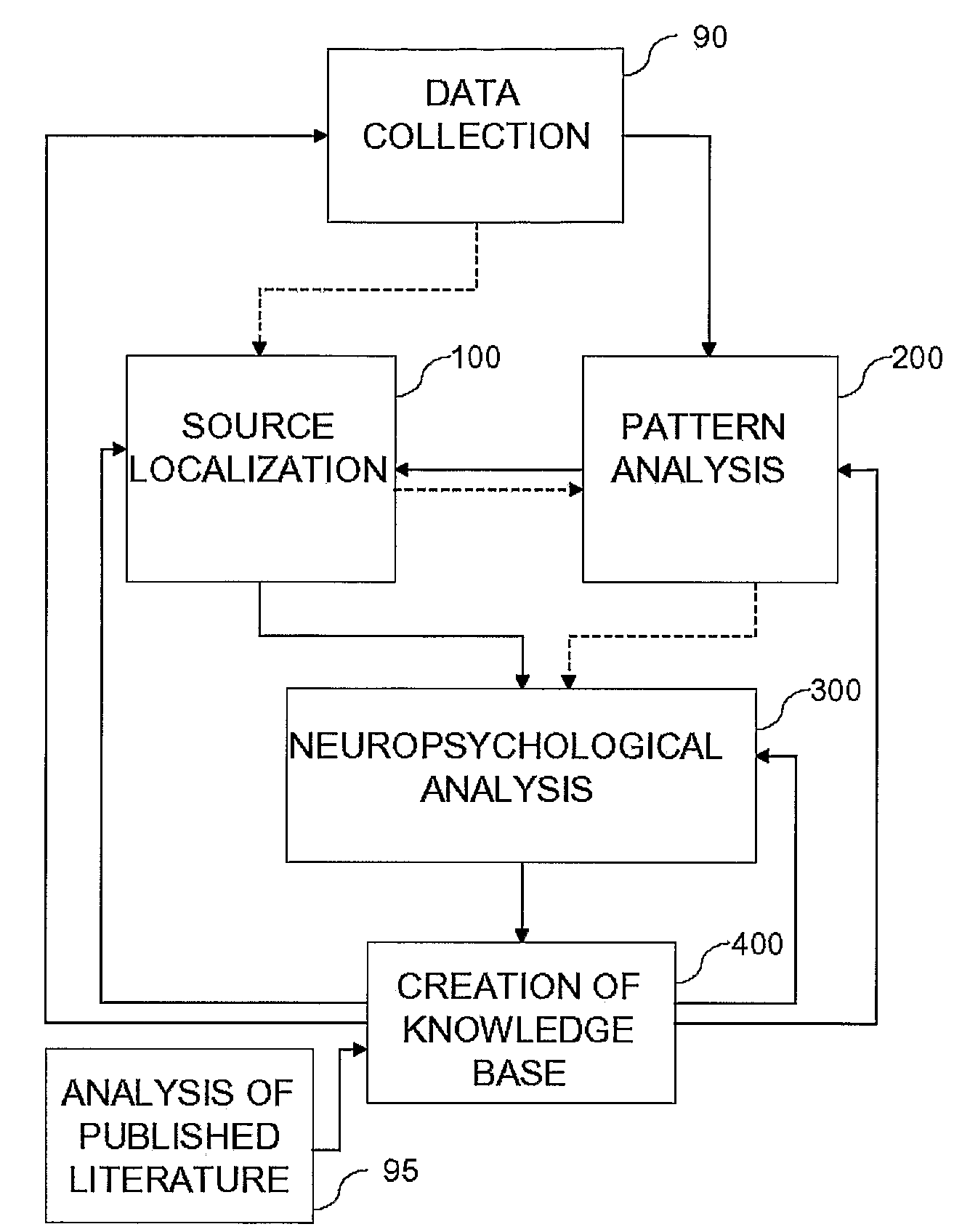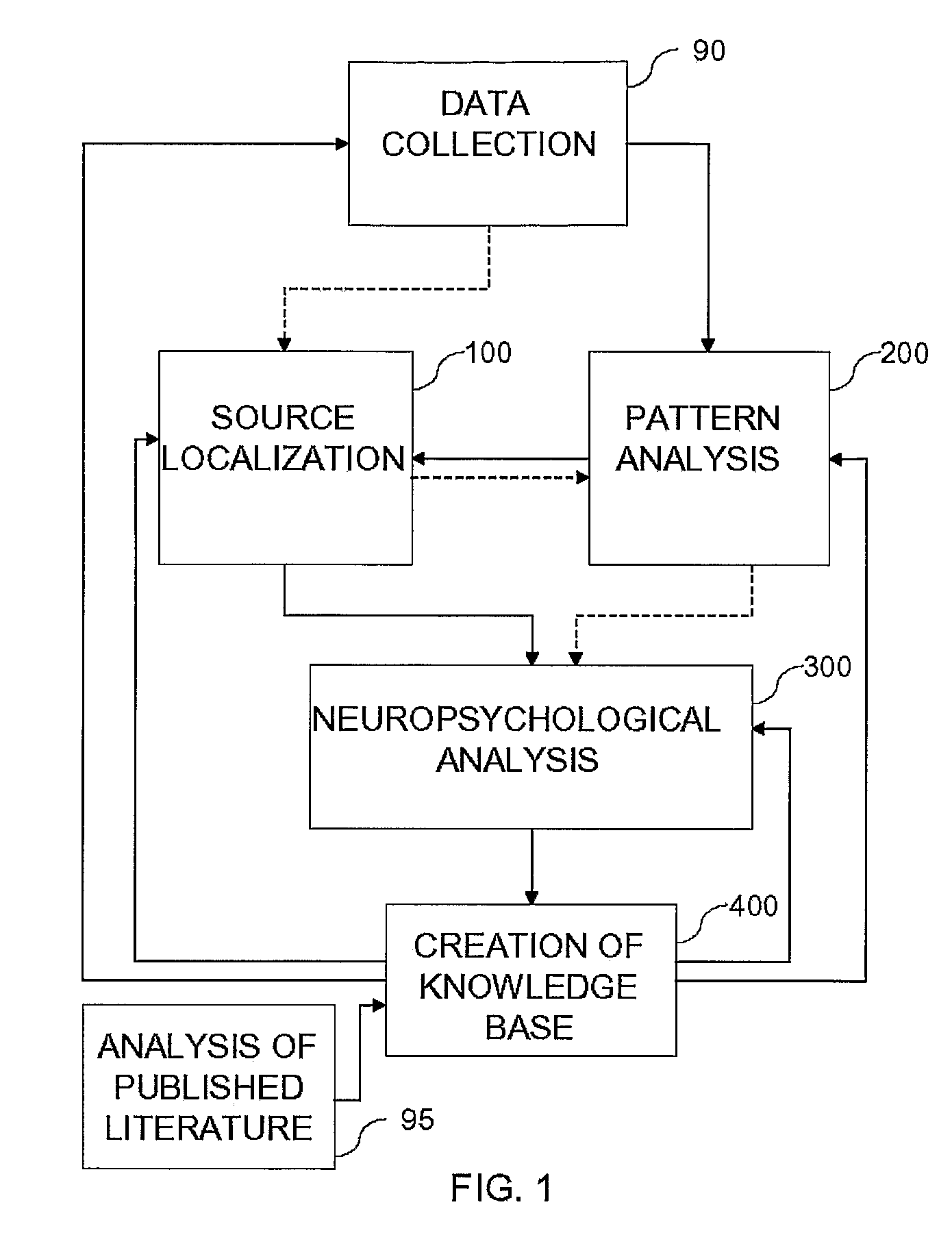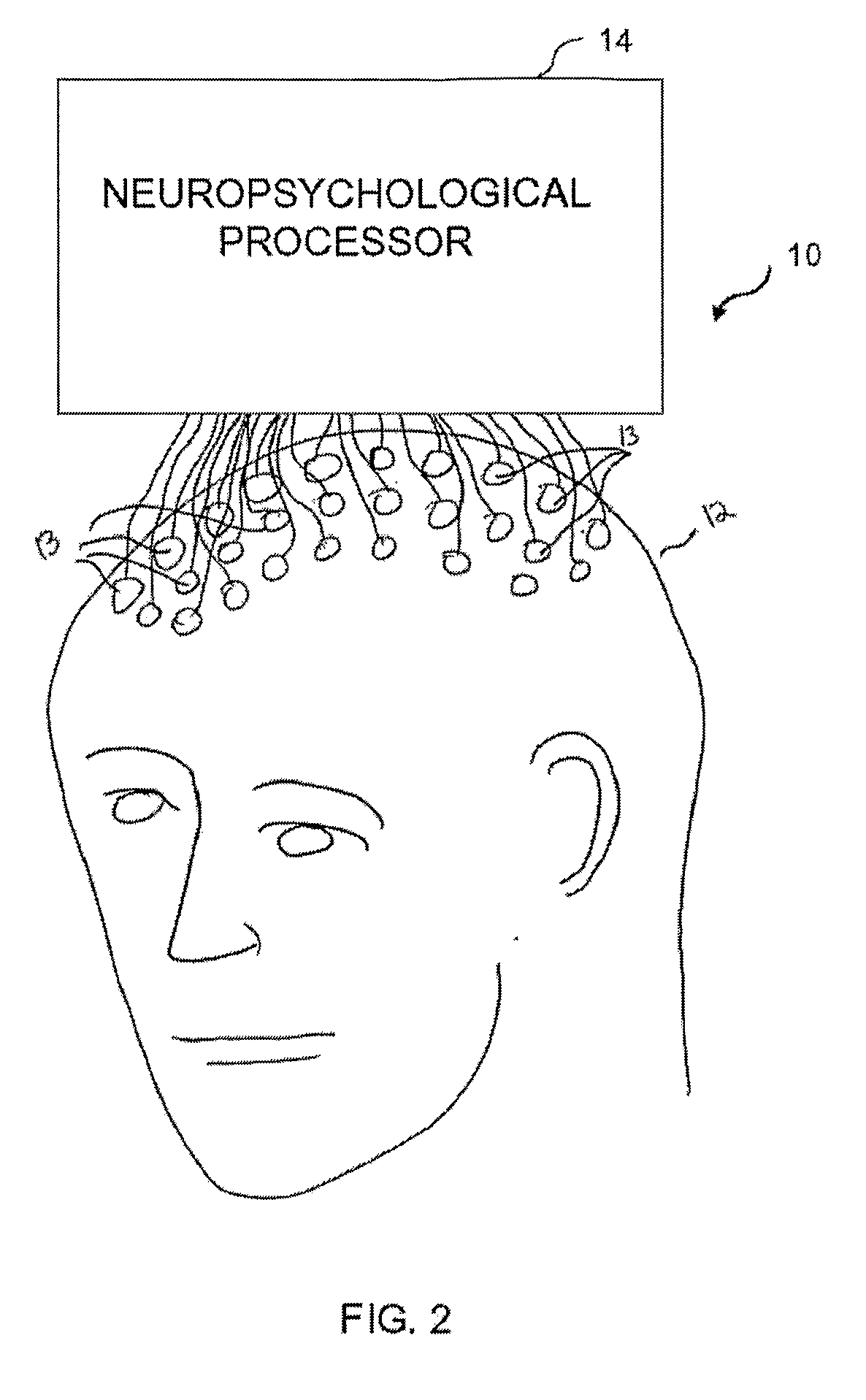Neuropsychological spatiotemporal pattern recognition
a spatiotemporal pattern and neuropsychological technology, applied in the field of neuropsychological spatiotemporal pattern recognition, can solve the problems of not yielding sufficiently sensitive and specific identification of flow patterns underlying specific behavioral functions, and achieve the effect of reducing the number of possible pathways
- Summary
- Abstract
- Description
- Claims
- Application Information
AI Technical Summary
Benefits of technology
Problems solved by technology
Method used
Image
Examples
first embodiment
[0048]Reference is now made to FIGS. 9 and 10, taken together, where FIG. 9 is a flow chart diagram illustration of a method of pattern analysis 200, in accordance with the present invention wherein source localization is performed prior to pattern analysis, and FIG. 10 is a graphical illustration of a step of pattern analysis 200, as will be described hereinbelow. First, locations found by source localizer 20 are mapped (step 202) onto 3-D grids over time. As shown in FIG. 10, at each time period, a different three-dimensional map of the various locations is generated, showing (step 204) signal strengths at locations for a primary time period A and a secondary time period B. Additional time periods may be included as well. Generally, the signal strengths and their spatial distributions change after a period of time (usually in the milliseconds—up to tens of milliseconds range). Thus, for example, at one time, particular localizations may demonstrate particular signal strengths (sho...
second embodiment
[0076]Reference is now made to FIG. 23, which is a block diagram illustration of processor 604, showing the components in greater detail. Processor 604 includes an input adjustor 610, a pattern comparator 612 and a copy of knowledge base 16 created from experimental and published information, as described above. Input adjustor 610 is configured to adjust input from signal collector 602 so that it conforms to the flow pattern information found in knowledge base 16. Thus, in one embodiment, input adjustor 610 includes a source localizer 20 and is configured to perform source localization so as to identify regions of the brain being activated by the activity or task performed by testing subject 603. In another embodiment, input adjustor 610 is configured to identify peaks, wavelets, or other discrete identifiable elements over time for electrodes 13. In this second embodiment, the knowledge base patterns are also described at this electrode level. Pattern comparator 612 then takes the ...
PUM
 Login to View More
Login to View More Abstract
Description
Claims
Application Information
 Login to View More
Login to View More - R&D
- Intellectual Property
- Life Sciences
- Materials
- Tech Scout
- Unparalleled Data Quality
- Higher Quality Content
- 60% Fewer Hallucinations
Browse by: Latest US Patents, China's latest patents, Technical Efficacy Thesaurus, Application Domain, Technology Topic, Popular Technical Reports.
© 2025 PatSnap. All rights reserved.Legal|Privacy policy|Modern Slavery Act Transparency Statement|Sitemap|About US| Contact US: help@patsnap.com



